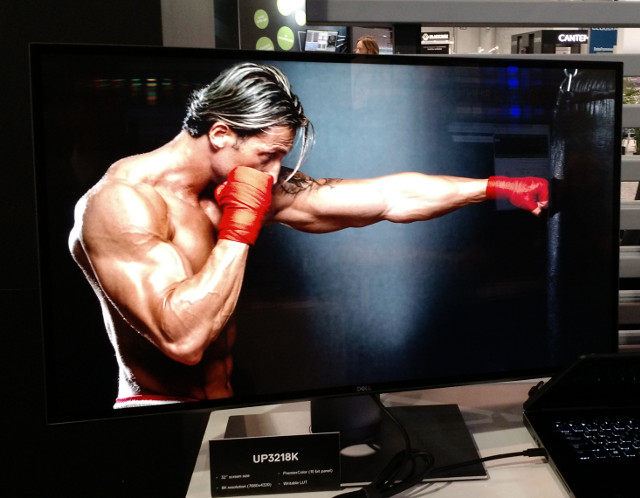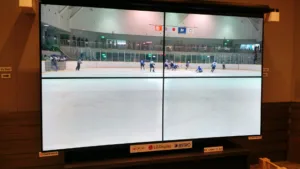We did not do an exhaustive search for 8K equipment, but did run across a few demos.
NHK was in the North Hall as usual with their 8K theater. This featured a 350” diagonal unity gain screen illuminated by 4 JVC e-shift 4K projectors that were edge blended into one seamless image. The image quality was quite remarkable considering there is an e-shift to increase the resolution and blending to create a pixel perfect blend. No seams were visible and the image looked crisp and sharp running off native 8K content. Each projector outputs 2600 lumens and with the unity gain screen at this size, the luminance was 900 cd/m² over this area.
NHK also showed their “8K living room in the 2020s.” This includes their 22.2 channel spatial audio solution along with an 8K display. Since single panel 8K displays are rare and expensive, NHK showed a 2×2 tiled solution using 65” OLED 4K panels from LG as an interim solution to give viewers an idea of the future (and previously shown at IBC). Somehow, they were able to show content running at 120 fps.
And how does NHK envision the single-panel solution evolving? They see a flexible, roll up display with 8K and OLED technology as the solution in the 2020s running at 120 fps with HDR and WCG. To get there, they are researching flexible OLED with an inverted structure to help prevent moisture and oxygen degradation of the OLED materials.
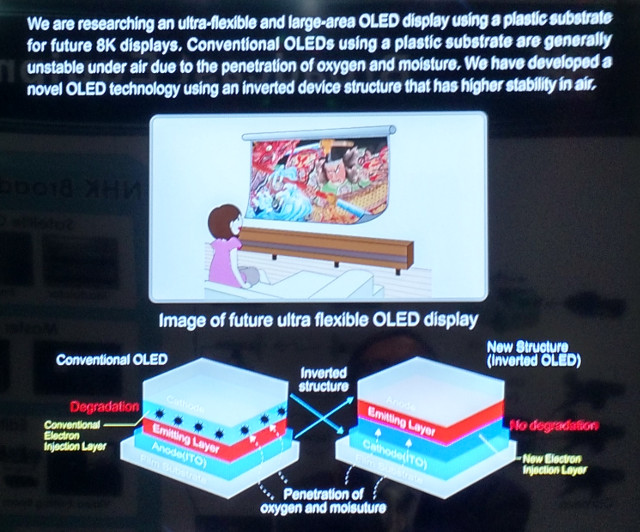
In the Ikegami booth, for example, we saw the SHK-810 Super High Vision Digital Portable Camera. This features an 8K Super 35 mm CMOS sensor, PL lens mounting, lens aberration correction and a 40 Gbps fiber SMPTE interface. Outputs can be at 8K, 4K or 2K. Images were displayed on an 8K monitor with an Ikegami label.
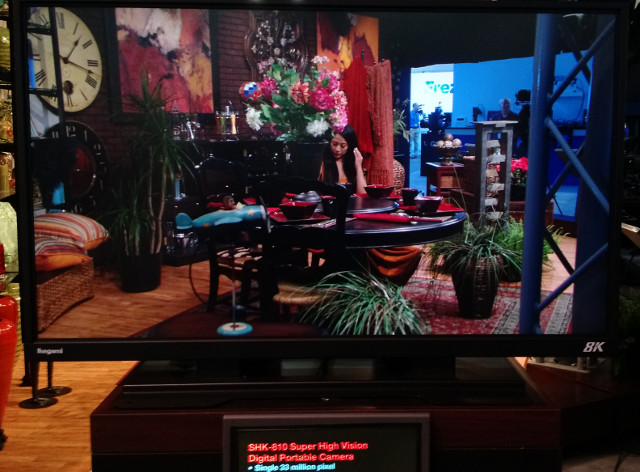
In the Snell Advanced Media (SAM) booth, officials were discussing the capabilities of their Rio color grading platform, which the company owns via their acquisition of Quantel. This platform can grade 8K/120 content in HDR. New for NAB was the ability to now grade Dolby Vision content as well. For this case, the output is an XML file plus the media (in a tiff format, for example). This is sent to the Dolby CMU at other facilities to generate the 1000 cd/m² TV version, for example, or other derivatives. SAM is currently waiting for Dolby certification, which they expect in May.
Spin Digital was demonstrating their 8K/120 HEVC video player at NAB. It features a software HEVC decoder with DX12 video render for 7680 x 4320, 4:2:0, 10-bit, 120fps SDR video. This was played back on a 2 x 2 flat panel set up in their booth along with a larger 2 x 2 set up in the Intel booth. Compute power included two Intel Xenon E5-2699 v4 (2×22 core) CPUs plus two Nvidia Quadro M5000 + Quad sync GPUs all running on Windows 10.
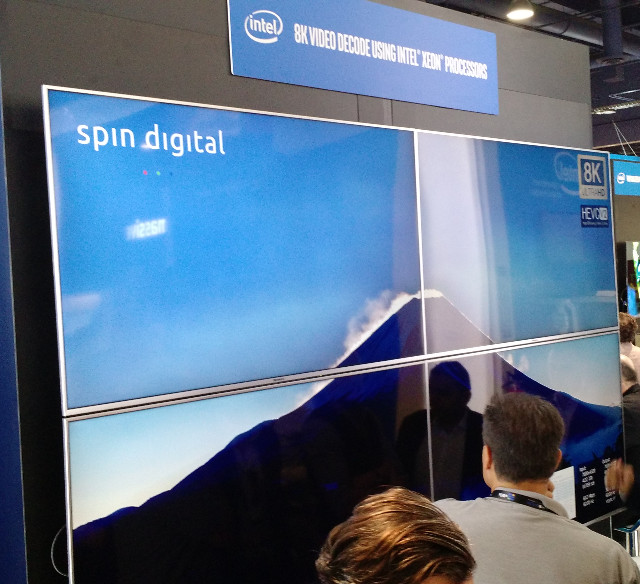
Dell was showing their UP3218K monitor at NAB. This is a 32” 8K monitor debuted at CES 2017 that features a 10-bit panel, 12-bit processing pipeline and an A/R coating instead of a matte finish. They were showing it being calibrated with an X-Rite sensor and a 1D writable LUT.
Content can be fed to the monitor over a single DP 1.4 interface without Display Stream Compression if the content runs at 30 fps. You will need DSC if the content runs at 60 fps.
It is an edge lit display with 400 cd/m² and 1300:1 contrast, so not HDR, but it does support 99% of the P3 color space (but does not support HDR formatted input content). It is available now for $5K, although currently sold out due to high demand. These seem oriented toward photographers and graphic artists. – CC
